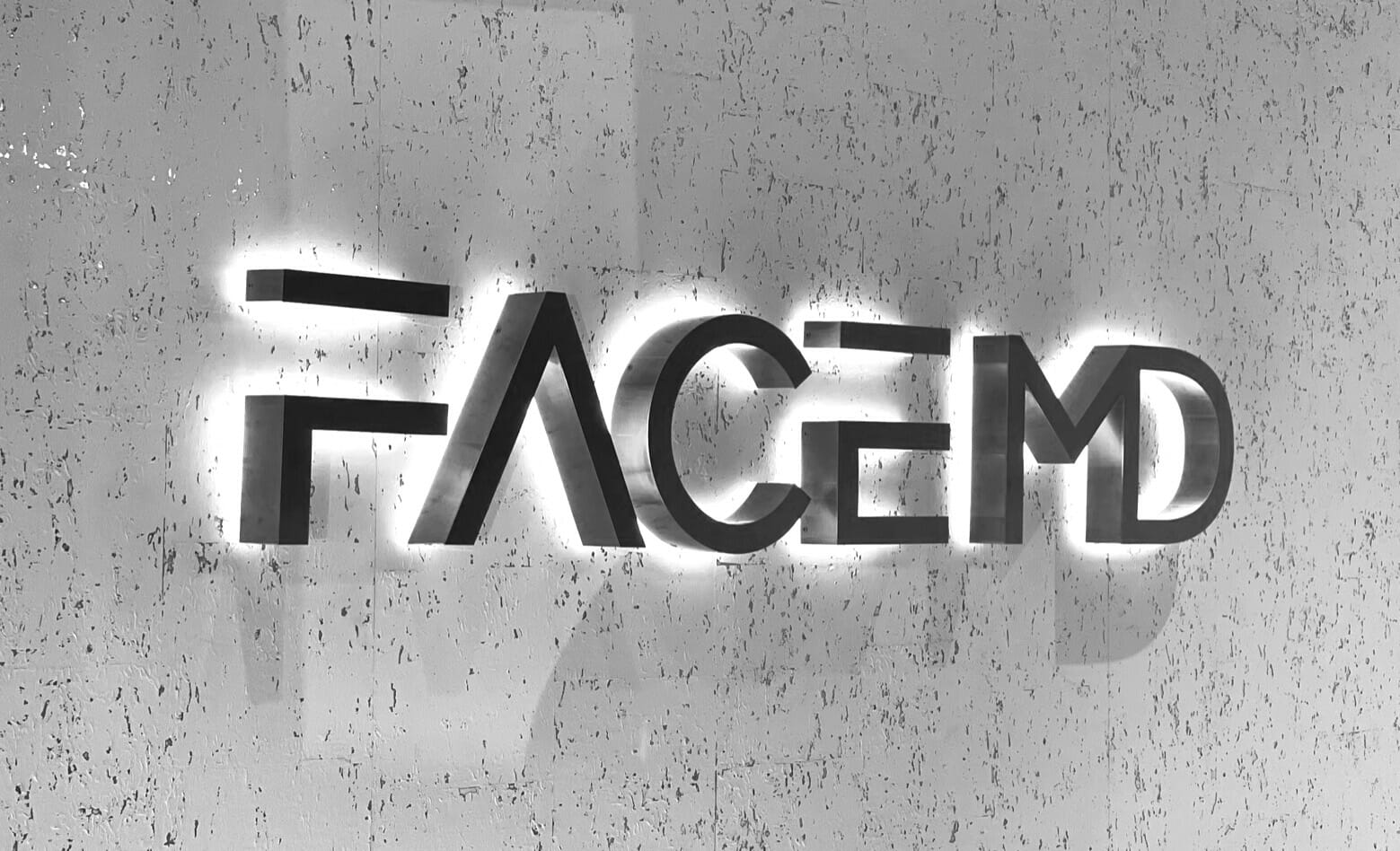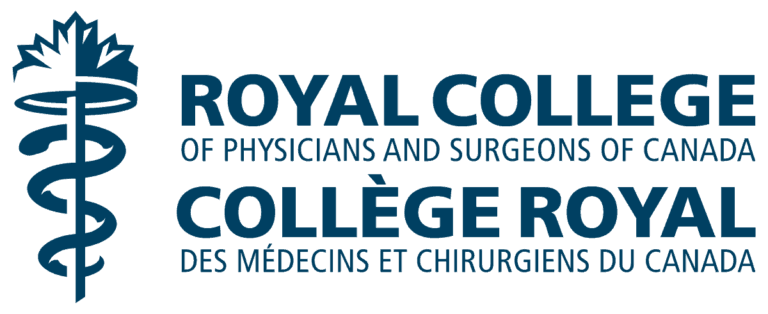Your guide to deep-plane facelift in Montreal
Facelift Montreal - Keep a youthful appearance with facelift treatments
Are you looking in the mirror and wondering why you don’t look the same way you feel? A facelift, or rhytidectomy, is a surgical procedure meant to improve and reduce the visible signs of aging on the face. The goal of facelift surgery is to leave you looking and feeling younger, rested, and a better version of yourself.
The face and neck have a complex and convoluted anatomy. It is crucial to entrust the care of your face to a professional who completely comprehends its architecture and is capable of making alterations using a cutting-edge, secure, and minimally intrusive procedure. Work with Dr. Moubayed in Montreal to get remarkable results!
What is a facelift?
There are as many definitions of a facelift as there are head and neck surgeon practicing in facial plastic surgerys. In our practice, we perform facelifts when the goal is to lift the descended tissues of the midface.
Are you looking in the mirror and wondering why you don’t look the same way you feel? A facelift, or rhytidectomy, is a surgical procedure meant to improve and reduce the visible signs of aging on the face. The goal of facelift surgery is to leave you looking and feeling younger, rested, and a better version of yourself.
The face and neck have a complex and convoluted anatomy. It is crucial to entrust the care of your face to a professional who completely comprehends its architecture and is capable of making alterations using a cutting-edge, secure, and minimally intrusive procedure. Work with Dr. Moubayed in Montreal to get remarkable results!
Do you have extra face skin on your jowls and neck?
Benefits offered by a facelift procedure
A single treatment to address several indications of ageing
Numerous factors, such as the loss of facial fat and the thinning of dermal tissue, can contribute to the gradual deterioration of the quality of your skin. These changes may be brought on by ageing, gravity, sun damage, smoking, hereditary factors, and stress.
By removing extra skin, tightening underlying tissue and muscle, and then redraping the remaining skin for a smoother, more taut appearance to the face and neck, modern facelift operations aim to restore many signs of aging encountered through the years. Many common signs of aging can be resolved with a facelift in only one procedure if you are struggling with any of them.
Almost undetectable surgery scars
Facelift incisions are designed to be almost undetectable, so there will be minimal scarring or other indicators that you underwent a cosmetic procedure. Most facelift incisions are made behind the ear or along the hairline for easy concealment following surgery, though the size and exact location of your incisions may vary based on the regions you wish to treat and the outcomes you seek.
Natural-looking results
Facelift results that were obviously overdone are a thing of the past. Instead than just tightening the additional skin on your face, cosmetic surgery treatments now concentrate on reshaping underlying tissue to give you a more natural-looking appearance.
Dr. Moubayed is an expert in facial anatomy and helping patients look younger while maintaining their natural appearance. His objective is always to achieve a refreshed, natural appearance following facelift procedures.
Contemporary, Minimally Invasive Procedures
Every patient has distinct expectations and goals, as well as various tolerances for downtime and surgical complexity. Because of this, each instance needs to be unique. Dr. Moubayed will make sure that the strategy is appropriate for you, whether we opt for a full-face deep plane rhytidectomy or a mini-lower facelift.
Quick recovery
Recovery after surgery is important. Dr. Moubayed is able to reduce his patients’ recovery time and discomfort by using meticulous technique, minimally invasive procedures when indicated, and very specific pre and post-operative protocols.
What type of facelift does Dr. Moubayed perform?
Dr. Moubayed’s technique of choice is the deep-plane face and neck lift, where meticulous dissection is carried out above the facial nerve to volumize and reposition the descended midface tissues. To optimize results, sometimes CO2 laser, radiofrequency, facial implants, liposuction, and fat grafting are added to the procedure.
Clinique Face MD
What are the risks of a facelift?
Like any facial plastic surgery procedure, face lift surgery presents the universal (but minimal) risks of scarring, bleeding (and bruising), infection (superficial or deep), and pain (temporary or permanent).
However, the main risk of any cosmetic surgery is not satisfied with the result. After a proper consultation that includes a complete examination and photo evaluation, Dr. Moubayed can generally produce the results desired by the patient. However, we do not control the healing of tissues, and some patients heal in an unpredictable way producing asymmetries or irregularities that can sometimes require touch-ups.
Any facelift procedure involves the risk of producing paralysis of a facial nerve branch, temporary (and sometimes permanent) numbness of the face or ear (via the great auricular nerve), hair loss, and changes in skin pigmentation.
Dr. Moubayed is a surgeon that is exclusively trained in facial surgery. He has a conservative and individualized approach with each patient. All patients are followed closely after surgery with very precise and very clear instructions. All of this is done in order to minimize the risks listed above.
Who might benefit from a facelift?
In general, if you have significant wrinkles and skin laxity, you may be a good candidate for this procedure. Candidates must go to a consultation visit to learn whether their skin condition is suitable for this procedure or whether other treatments are preferred for their cosmetic goals. If you’re thinking about getting a facelift, take into account the following.
- Are you physically healthy?
- Do you have a sagging midface?
- Do you have jowls that bother you?
- Is there no demarcation between your face and you rneck?
- Are you bothered by platysmal bands, also known as “turkey neck”?
- Is your facial bony structure adequate to support a facelift?
- Are your expectations reasonable?
- Can you devote 6-12months of your life to take care of your face during the healing process?
Could you benefit from a surgical facelift?
Medically speaking, those with the following traits make suitable candidates for a facelift:
- Nonsmokers;
- People who are in good health and do not have any illnesses that would prevent them from healing;
- Patients without a history of abnormal scarring.
Would you like a personal consultation?
Deep plane facelift surgery
The SMAS (superficial muscular aponeurotic system), the facial expression muscles, as well as important facial retention ligaments, are released and repositioned during the deep plane facelift procedure. The midface is usually lifted more vertically, giving the patient a more youthful and renewed appearance. In contrast to prior procedures where the vector of pull was backwards providing a windswept look, this vertical vector of pull is essential in achieving natural results in the face.
The deep plane approach also enables the repositioning of nearby structures, including the fat pads on the midface, the replacement of decreased cheek volume, and the enhancement of facial contours. This treatment has the potential to provide outcomes that look natural and last for a long time.
Want a deep plane facelift in Montreal?
Mini facelift surgery
The goal of a limited incision facelift (or mini-lift), often referred to as a small facelift, is to reshape the jawline, cheeks, and jowls for a more youthful appearance. It entails a tiny, less noticeable incision into the hairline and around the ear, and it might use various procedures to address the underlying soft tissue and muscular layers (SMAS).
In comparison to a standard facelift, a small facelift has less downtime and is frequently done under local anaesthetic, with a 7–10 day recovery period. Based on your unique concerns and preferred results, Dr. Moubayed will advise you on the optimal kind of facelift you need.
Searching for a mini-facelift in Montreal?
Why get a facelift procedure?
Our facial bones resorb as we age, our skin becomes saggy and dull, our ligaments stretch, and the volume and compartments of our facial fat shifts. But each face is unique, and each face is affected differently by these age changes depending on how much they have changed it.
A facelift treatment corrects facial features
- A sagging midface
- Prominent jowls
- No distinction between the face and neck
- Platysmal bands (“Turkey-neck”)
- Excess skin face and neck skin
Why pick a facelift over alternative options for treatment?
Although non-surgical procedures like facial fillers, neuromodulators, and others may seem enticing, they frequently leave patients unsatisfied and can be just as expensive as a facelift. A facelift can result in inconspicuous scarring, direct control over and alterations to the facial anatomy that are longer lasting.
To improve the results, it can also be combined with other techniques. A facelift can increase your self-confidence in addition to improving your appearance by realigning your facial muscles to their more youthful position, addressing sagging skin and tissue, reshaping your jawline, and producing a balanced and natural-looking facial appearance. Overall, Dr. Moubayed’s facelift gives patients a refreshed appearance by keeping risks to a minimum.
Board-certified head and neck surgeon practicing in facial plastic surgery in Montreal, Dr. Sami Moubayed
- Double-board certified by the Royal College of Physicians and Surgeons of Canada and the American Board of Facial Plastic and Reconstructive Surgery
- Graduated in the top 10% of his specialty in Otolaryngology-Head and Neck Surgery
- Scored in the top 10% on the American Board of Facial Plastic and Reconstructive Surgery examination
- Was the first surgeon to introduce Ultrasonic rhinoplasty to Quebec
- Was the first non-American to train at Stanford in Facial Plastic and Reconstructive Surgery
- Has published over 85 scientific articles and chapters on the topic of surgery, including important contributions to the field of facial plastic surgery.
- Has published a scientific textbook to teach Facial Plastic and Reconstructive Surgery to doctors worldwide
- Has presented over 100 times at national and international surgery conferences and is regularly invited to international conferences to lecture on Facial Plastic Surgery.
- Is an Assistant professor of Surgery at the University of Montreal
- Performs charitable surgery overseas on underserved populations and locally on victims of domestic violence
- Has performed over 3500 procedures in his career
In Montreal, choose Dr. Moubayed as your head and neck surgeon practicing in facial plastic surgery.
Why should I have a facelift in Montreal?
Would you benefit from a facelift? If the response is affirmative, let’s discuss with Dr. Moubayed the benefits of getting a facelift.
A facelift naturally lifts the underlying facial structure. By eliminating superfluous skin, redesigning the facial features, and strengthening the facial muscles, your appearance can be revived. Non-surgical methods are occasionally employed to attempt to achieve the same look, but the results typically don’t last as long.
Dr. Moubayed's facelift procedure in Montreal can help you achieve natural-looking facial rejuvenation.
In order to provide our patients in Montreal with a natural-looking and durable result, Dr. Moubayed carefully curates an expert practice in facelift surgery. He combines North American standards of safety and good surgical technique with a Montreal flair of style.
Montreal Facelift
Learn more about Dr. Moubayed's facelift.
What is a facelift?
A facelift, sometimes referred to as a rhytidectomy, is a surgical operation that tightens the skin and underlying muscle layers and repositions drooping or loose tissue in order to enhance the appearance of the face. A facelift aims to give the face a more youthful, renewed appearance.
Who is a good facelift candidate?
People who have drooping or loose skin on their faces, as well as loss of volume in the midface area, are frequently advised to have a facelift. Generally speaking, healthy individuals who don’t smoke and have realistic expectations for the procedure’s results make good candidates for facelifts.
What kinds of facelifts are there?
Traditional facelifts, micro facelifts, and deep plane facelifts are only a few of the several types of facelifts available. Your unique facial anatomy and desired results will determine the kind of facelift that is best for you.
How long does a facelift take to heal?
Although recovery times for facelifts can differ, most patients can anticipate returning to work and their regular routines three to four weeks after the procedure. After a facelift, swelling and bruising are frequent side effects, but they should go away in a few weeks.
You should be mostly healed after the operation and given the all-clear by your doctor to resume your usual everyday activities after two to four weeks of recovery. Your recovery time might be decreased if you are in good health and rigorously follow your aftercare instructions.
Could getting a facelift come with any risks?
A facelift has possible dangers and problems, just like any surgical surgery. Infection, scarring, bleeding, and changes in skin sensitivity are a few of these that may occur. Before the treatment, your surgeon will go through all the possible risks and complications with you in great detail.
Is it possible to combine a facelift with other procedures?
Yes, it is common to combine a facelift with other cosmetic rejuvenation techniques like a brow lift, blepharoplasty (eyelid surgery), or fat transfer to the face. The ideal procedure combination to help you accomplish your goal will be suggested by your surgeon.
How long do a facelift effects last?
Facelifts do not last forever as your face will keep on aging afterwards. The generally accepted international answer is 10-12 years. At that point, the procedure may be repeated. However, how quickly the face ages depends on a variety of factors, including genetics, exposure to the environment, and lifestyle choices.
To maintain the effects of a facelift, some patients choose CO2 laser and neuromodulators for maintenance treatments.
How painful is a facelift?
After a facelift, most discomfort happens during the first 48 hours, after which most patients report minimal pain. Pain is controlled with painkillers your surgeon will prescribe. Within a few weeks of the treatment, the majority of patients are able to resume work and their regular routines.
Will my facelift leave behind any visible scars?
The incisions for a facelift are frequently made in discrete places, including the hairline or the creases in the face. After a facelift, there may likely be some scarring, but these scars should disappear with time and blend in well.
Is it possible to combine a facelift with other non-surgical procedures?
Yes, non-surgical techniques including facial fillers, neuromodulators, lasers, and Morpheus8 can frequently be used in conjunction with facelifts to improve the final outcome. For your particular needs and objectives, your surgeon will be able to suggest the optimum mix of operations.
Do your eyes change after a facelift?
The shape or look of your eyes won’t change as a result of a facelift in and of itself. The majority of treatments that could alter how your eyes look are due to blepharoplasty, often known as eyelid surgery. It is true that during the initial few weeks of recovery, swelling may make the area around your eyes look larger and the skin under your eyes less wrinkled.
Are the outcomes of nonsurgical facelift procedures comparable?
Despite recent considerable advances in nonsurgical facelift treatments, they still cannot match the outcomes of a surgical facelift. The most efficient method of treating prominent age indications in the midface and lower neck is still a surgical facelift. Non-surgical techniques can result in minor enhancements, but they cannot rejuvenate the skin to the same extent as a facelift. A facelift can be your best option if you want to get more noticeable and long-lasting effects.
An overview of facelift techniques
Facelift surgery, commonly referred to as a face-lift or rhytidectomy, is a cosmetic surgery treatment that tightens the skin and muscles of the face and neck to enhance facial look. Numerous methods, including as the classic facelift, deep plane facelift, and mini-facelift, can be used to accomplish facelift surgery.
Otolaryngologists-Head and Neck Surgeons with specialised fellowship training in facelift surgery and other cosmetic operations for the face and neck are known as head and neck surgeon practicing in facial plastic surgerys. The largest professional association in the world for head and neck surgeon practicing in facial plastic surgerys is called the American Academy of Facial Plastic Surgery (AAFPRS). head and neck surgeon practicing in facial plastic surgerys are certified by the American Board of Facial Plastic and Reconstructive Surgery (ABFPRS).
In a surgical setting, facelift surgery is often carried out while the patient is asleep. Depending on the method utilized and the amount of work being done, the process may take several hours. Following the procedure, the patient must relax and give themselves enough time to heal, which can take anywhere from a few days for a minor facelift to several weeks for a full facelift.
Non-surgical procedures like nonsurgical brow lifts and dermal fillers can also rejuvenate the face. Compared to a facelift, these procedures are less invasive and frequently need less time for recuperation.
We are dedicated to giving our patients one of the best possible care and delivering outcomes that are both natural and youthful. To discuss your options and choose one of the best course of action for your particular needs, we invite you to schedule a consultation with one of our head and neck surgeon practicing in facial plastic surgerys if you are thinking about having a facelift or another facial rejuvenation procedure.
What can I expect from my consultation?
You should first prepare to talk about your physical goals and reasons for doing so. In the consultation, your current body image and your desired post-facelift state will be discussed. Dr. Moubayed is interested in how you hope to appear after surgery and what particular modifications you’d like to see.
Second, you should anticipate being questioned about your health issues, medication allergies, and medical procedures. Your surgeons must perform a broad evaluation of your health in order to better plan for the procedure and the necessary recovery period. He may also inquire about your usage of alcohol, tobacco, drugs, vitamins, herbal supplements, and current medications because these may have an effect on the procedure and your recovery. It is crucial that you inform your board-certified facial surgeon about any prior operations.
Last but not least, ask Dr. Moubayed questions while you’re there. Bring a list of questions for your facelift surgeon at your consultation; don’t be hesitant to do so. Understanding every aspect of your facelift process is essential. It’s common to be worried before an operation or in preparation of your anticipated new appearance. Expressing your feelings to your head and neck surgeon practicing in facial plastic surgery is not something to be afraid of.
Dr. Moubayed is committed to learning about his patients' expectations for the rejuvenating procedure. Dr. Moubayed is a surgeon that likes his facelift results to look natural.















